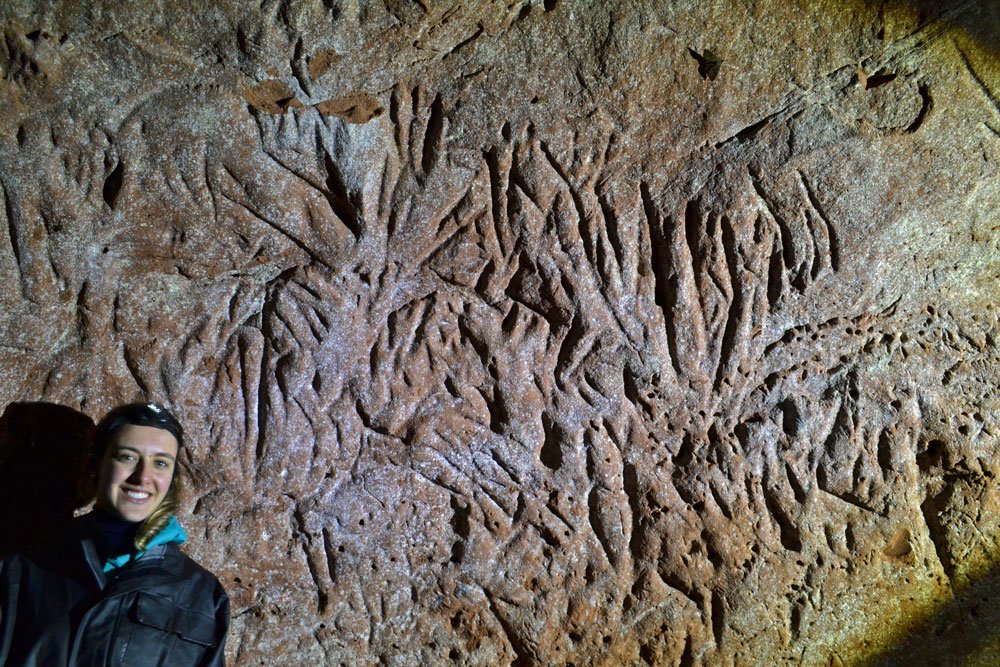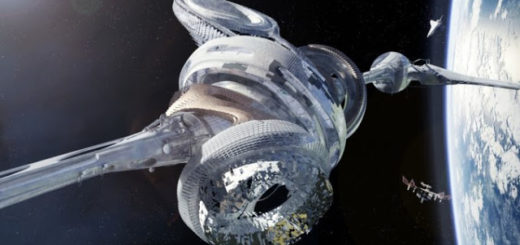Prehistoric Engineers Of The Huge Ancient Tunnels In South America – Identified
The world beneath our feet is sometimes full of surprises. In South America, there are hundreds of kilometers of weird tunnels and peculiar caves. The ancient builders of this subterranean world have been long remained unidentified.
Scientists admit they’ve seen anything like this before, but the mystery seems to have been solved. Only, the prehistoric engineers of these unusual tunnels and caves are not quite who or what we expected.

In 2010 that Amilcar Adamy learned about the existence of a strange cave in southern Brazil. When researchers started to investigate, they eventually discovered a way to a gaping hole on a wooded slope a few miles north of the Bolivian border. It soon became obvious the cave and tunnels were not the result of a natural geological process.
A different, equally peculiar cave, located about 1,700 miles to the southeast was discovered by Heinrich Frank, a professor at the Federal University of Rio Grande do Sul.
Professor Frank crawled inside and he noticed it was a single shaft, about 15 feet long. All over the ceiling were claw marks. Unable to identify any natural geological explanation for the cave’s existence, he eventually concluded that it was a “paleoburrow,” dug, he believes, by an extinct species of giant ground sloth.
“I didn’t know there was such a thing as paleoburrows,” says Frank. “I’m a geologist, a professor, and I’d never even heard of them.”
Similar underground passages roughly four-feet wide, 65-feet long and lined with claw marks were found in other places.
The original burrow responsible for the construction must have been about 250 feet long.
“There’s no geological process in the world that produces long tunnels with a circular or elliptical cross-section, which branch and rise and fall, with claw marks on the walls,” says Frank. “I’ve [also] seen dozens of caves that have inorganic origins, and in these cases, it’s very clear that digging animals had no role in their creation.”
According to paleontologist Anthony Martin, the earliest evidence we have for burrowing goes back 550 million years. “Burrowing has shaped the environments we see today, from the ocean floor to high mountaintops,” Martin says. “Burrowing strategies are also key to the survival of many species – beyond just the burrowers themselves.”
Burrowing enabled animals to make it through the worst that Earth threw at them – or even the worst that the solar system threw at them. A lot of animals, for example, lived after a large asteroid impact killed off the dinosaurs 66 million years ago. Why did they survive? They were in their bunkers! It’s likely there were other factors, but burrowing is definitely an advantage when you get a giant space rock dropped on you.
Professor Heinrich Frank has documented at least 1,500 paleoburrows so far. In Santa Catarina, just to the north, he’s found hundreds more and counting.
The strange cave in Rondonia turned out to be one of the largest ever measured, with branching tunnels altogether tallying about 2,000 feet in length. The main shafts – since enlarged by erosion – were originally more than six feet tall and three to five feet wide; an estimated 4,000 metric tons of dirt and rock were dug out of the hillside to create the burrow.
“This wasn’t made by one or two individuals,” says Adamy. “It was made by many, over generations.” Frank describes it as an exciting, though not particularly surprising, discovery.
“We knew that there could be burrows this big,” he says. “This huge one in Rondonia simply confirms that they do exist.”
Not all intriguing underground structures are man-made. The Devil’s Corkscrews in the Sioux Country of Nebraska have long been regarded as a scientific puzzle that was impossible to solve.
Who carved these remarkable spirals with a precision that might be expressed by a mathematical formula?
Some of them are fifteen feet long and about 15 to 30 million years old! Later investigation revealed something quite startling and yet very logical. The unknown creator of the Devil’s Corkscrews was actually a prehistoric beaver called Palaeocastor!



 Creators of mankind
Creators of mankind Description of “Tall white aliens”
Description of “Tall white aliens” Where they came from?
Where they came from? About hostile civilizations
About hostile civilizations The war for the Earth
The war for the Earth “Tall white aliens” about eternal life
“Tall white aliens” about eternal life Video: “Nordic aliens”
Video: “Nordic aliens” Aliens
Aliens Alien encounters
Alien encounters The aliens base
The aliens base UFO
UFO Technology UFO
Technology UFO Underground civilization
Underground civilization Ancient alien artifacts
Ancient alien artifacts Military and UFO
Military and UFO Mysteries and hypotheses
Mysteries and hypotheses Scientific facts
Scientific facts


















